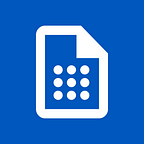Multiple choice tests: pros and cons
Ever since their popularisation on the second half of last century, whether or not to adopt multiple choice tests (MCTs) has been a heated debate amongst educators. In this post we will go over some of the pros and cons of using MCTs inside the classroom.
Pros
Time saving
Large scale standardised tests (such as SAT or GMAT) rely heavily on automated multiple choice tests. In such exams, the often huge number of applicants makes it unfeasible to grade written assessments. In addition, standardised tests tend to evaluate broad areas of knowledge, favouring many questions that covers a wide range of topics over few questions that require deeper, multiple-steps reasoning. In this scenario, multiple choice tests have been widely deployed, since they can be automatically graded.
Inside the classroom, MCTs are also an important tool on a teacher’s tool belt. We previously wrote about how MCTs help teachers save time. SmartGrade is one app that makes grading and analysing MCTs a breeze. It uses your own smartphone’s camera to scan and instantly grade multiple choice answer sheets.
Automated exam analysis
There is no denying that a data-driven approach to teaching can yield amazing results. Educators are increasingly turning to analytics for optimising the learning experience inside the classroom.
There is incredibly rich information in multiple choice tests. For a single test, it is possible to automatically build a statistical picture of the whole classroom, depicting how the grades are distributed, as well as which specific topics should be further developed with the students. For example, SmartGrade immediately builds up an actionable set of analytics for a MCT:
Track individual student progress
Automated grading implies time saving, which enables shorter and more frequent tests to be applied. This adds an incredibly valuable dimension to learning analytics: time. Across multiple exams, it is possible to exactly track progress of each student in your classroom.
Following individual progress adds visibility to students who need closer support. Not only that, it also enables electing well performing students to provide support to other students. There are incredible classroom dynamics that can be drawn from such interactions, such as peer learning.
Practice for standardised tests
It is an undeniable fact that at some point our students will take standardised tests. Developing familiarity with multiple choice tests in a friendly and controlled environment can be extremely valuable.
Cons
MCTs don’t capture the nuances of the student’s reasoning
Reducing complex thought process to a singular mark on an answer sheet implies loss of information about the knowledge being tested. There is no way around that. This is one of the biggest arguments against the blind use of MCTs everywhere, and it is a point worth being made.
On the other hand, multiple choice tests allow for a larger number of questions to be presented in a single assessment. This trade-off between depth and breadth is one that educators often have to consider.
“Tricky questions”
Writing good multiple choice questions (MCQ) is not trivial. Weakly constructed questions contribute to the image that MCTs don’t work well. There is abundant resource (both online and offline) on how to construct good MCQs. Mastering the creation of good multiple choice questions is paramount to making a good assessment instrument for your students.
Requires special machines for grading
It used to be true that automatically grading multiple choice tests requires expensive, special purpose machines, such as the Scantron. This is no longer a correct assumption.
Apps like SmartGrade turn your own smartphone (both iOS, Android devices) into an answer sheet scanner. Teachers use SmartGrade to grade multiple choice exams for a whole classroom in just a few minutes. On top of that, SmartGrade automatically generates reports with actionable exam statistics, such as the percentage of correct answers for each question.
When to use MCTs
There is a lot of debate around the use of multiple choice tests as an assessment instrument inside the classroom. There are many pros and cons for doing so, and, as it often happens in education, there is no single silver bullet for teaching.
MCTs are an important tool and can provide rich and actionable data in an automated way. It can help teachers save time and easily identify topics that need further discussion in the classroom.
SmartGrade makes grading and analysing multiple choice tests an easy and quick task. It is available for Android and iOS.
Happy teaching!
